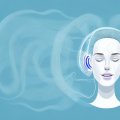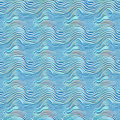Iliopsoas trigger points can be uncomfortable and cause stiffness in the hips, leading to decreased mobility and chronic pain. If you are looking for a way to alleviate this condition, trigger point ball therapy may be just what you need. Trigger point balls are small, firm balls designed to help relieve muscle tension, promote circulation, and offer a comfortable and effective solution in dealing with iliopsoas trigger points.
Understanding Iliopsoas Trigger Points: Causes and Symptoms
The iliopsoas muscle is located deep within the hip, making it susceptible to trigger points due to its proximity to other structures, such as nerves and blood vessels. The causes of iliopsoas trigger points can be numerous, including muscle overuse or injury, prolonged sitting or standing, and improper posture. Symptoms of iliopsoas trigger points can vary from a dull ache to sharp, shooting pain in the hip area, as well as stiffness and limited range of motion.
It is important to note that iliopsoas trigger points can also refer pain to other areas of the body, such as the lower back, groin, and thigh. This can often lead to misdiagnosis and ineffective treatment. It is recommended to seek the advice of a healthcare professional who specializes in trigger point therapy to properly diagnose and treat iliopsoas trigger points.
How Trigger Point Balls Work in Relieving Muscle Tension
Trigger point balls work on the principles of myofascial release, a form of massage that aims to release tension in the fascia, the connective tissue that surrounds and supports muscles. By applying pressure to the affected area with a trigger point ball, you can help release knots and adhesions within the muscle tissue, improve circulation, and alleviate pain associated with iliopsoas trigger points.
Additionally, trigger point balls can also help improve flexibility and range of motion by breaking up scar tissue and increasing blood flow to the affected area. Regular use of trigger point balls can also help prevent future muscle tension and injuries by promoting healthy muscle tissue and reducing the risk of muscle imbalances. It is important to use trigger point balls properly and consult with a healthcare professional if you have any underlying medical conditions or injuries.
Preparing for a Trigger Point Ball Therapy Session
Before using a trigger point ball, it is important to prepare the affected area. Start with gentle stretching exercises to help limber up the iliopsoas muscles and the surrounding area. You can also apply heat or cold therapy to the hip area to help reduce inflammation and pain. Once you are ready, lie down on your back and place the trigger point ball under the affected hip.
It is important to note that trigger point ball therapy can be uncomfortable or even painful at first. Start with gentle pressure and gradually increase as your muscles become more relaxed. Remember to breathe deeply and try to relax your body as much as possible. It may also be helpful to have a friend or partner assist you in reaching difficult areas. After the session, be sure to stretch again and apply ice or heat therapy as needed to help reduce any soreness or inflammation.
Techniques for Using a Trigger Point Ball on the Iliopsoas Muscle
There are several techniques you can use to target different parts of the iliopsoas muscle with a trigger point ball. One method is to roll the ball up and down along the muscle belly, applying pressure to specific trigger points as you go. Another technique is to hold the ball in place for a few seconds at a time on a single trigger point, then release and move on to the next one. Experiment with different techniques to find what works best for you.
It is important to note that when using a trigger point ball on the iliopsoas muscle, you should start with gentle pressure and gradually increase as your muscles become more relaxed. It is also recommended to use the ball for no more than 10-15 minutes at a time, and to take breaks in between sessions to avoid overworking the muscle. Remember to listen to your body and stop if you experience any pain or discomfort.
Tips for Targeting Specific Iliopsoas Trigger Points with a Trigger Point Ball
There are several specific trigger points associated with iliopsoas trigger points that you should focus on when using a trigger point ball. These include the belly of the muscle, the insertion point at the inner thigh, and the attachment point on the lower back. It is important to apply pressure to each of these trigger points to achieve the best results.
In addition to targeting these specific trigger points, it is also important to maintain proper form and posture during trigger point ball therapy. This can help to prevent further strain on the iliopsoas muscle and reduce the risk of injury. It is recommended to start with a gentle pressure and gradually increase as tolerated. It is also important to listen to your body and stop if you experience any pain or discomfort. Consistency is key when it comes to trigger point therapy, so aim to incorporate it into your regular self-care routine for optimal results.
Benefits of Using a Trigger Point Ball for Iliopsoas Pain Management
Trigger point ball therapy offers several benefits for individuals dealing with iliopsoas trigger points. These include improved flexibility and range of motion, reduced pain and stiffness, and improved circulation to the affected area. Additionally, trigger point ball therapy is a non-invasive, cost-effective, and portable treatment option, making it a great alternative to other forms of pain management.
It is important to note that trigger point ball therapy can also help prevent future injuries and pain. By regularly using a trigger point ball on the iliopsoas muscles, individuals can maintain healthy muscle tissue and prevent the development of trigger points. This can be especially beneficial for athletes or individuals who engage in activities that put strain on the hip flexors. Incorporating trigger point ball therapy into a regular self-care routine can lead to long-term pain relief and improved overall muscle health.
Comparing Other Forms of Iliopsoas Pain Relief with Trigger Point Ball Therapy
There are several other forms of pain relief available for individuals dealing with iliopsoas trigger points, such as chiropractic care, physical therapy, and medication. While these treatments can be effective, they can also be time-consuming and costly, and may not offer the same immediate relief as trigger point ball therapy. Combining trigger point ball therapy with other treatment options can offer a well-rounded, holistic approach to pain management.
Effective Stretches and Exercises to Supplement Trigger Point Therapy on the Iliopsoas Muscle
In addition to trigger point ball therapy, incorporating stretches and exercises into your daily routine can help prevent future iliopsoas trigger points from occurring. Effective stretches for the iliopsoas muscle include lunges, cobra pose, and pigeon pose. Strengthening exercises such as leg lifts and squats can also help improve the strength and stability of the surrounding muscles.
Incorporating Self-Care Techniques to Prevent Future Iliopsoas Trigger Points
Lastly, incorporating self-care techniques such as proper posture, regular exercise, and frequent breaks from prolonged sitting or standing can help prevent future iliopsoas trigger points from occurring. Maintaining overall physical health through a well-rounded exercise and diet regimen can also reduce the likelihood of developing muscle tension in the hip area.
With consistent practice and attention to overall physical health and wellness, trigger point ball therapy can offer a safe, effective, and non-invasive solution for individuals dealing with iliopsoas trigger points. By following these tips and techniques, you can alleviate pain and improve your overall mobility and quality of life.





